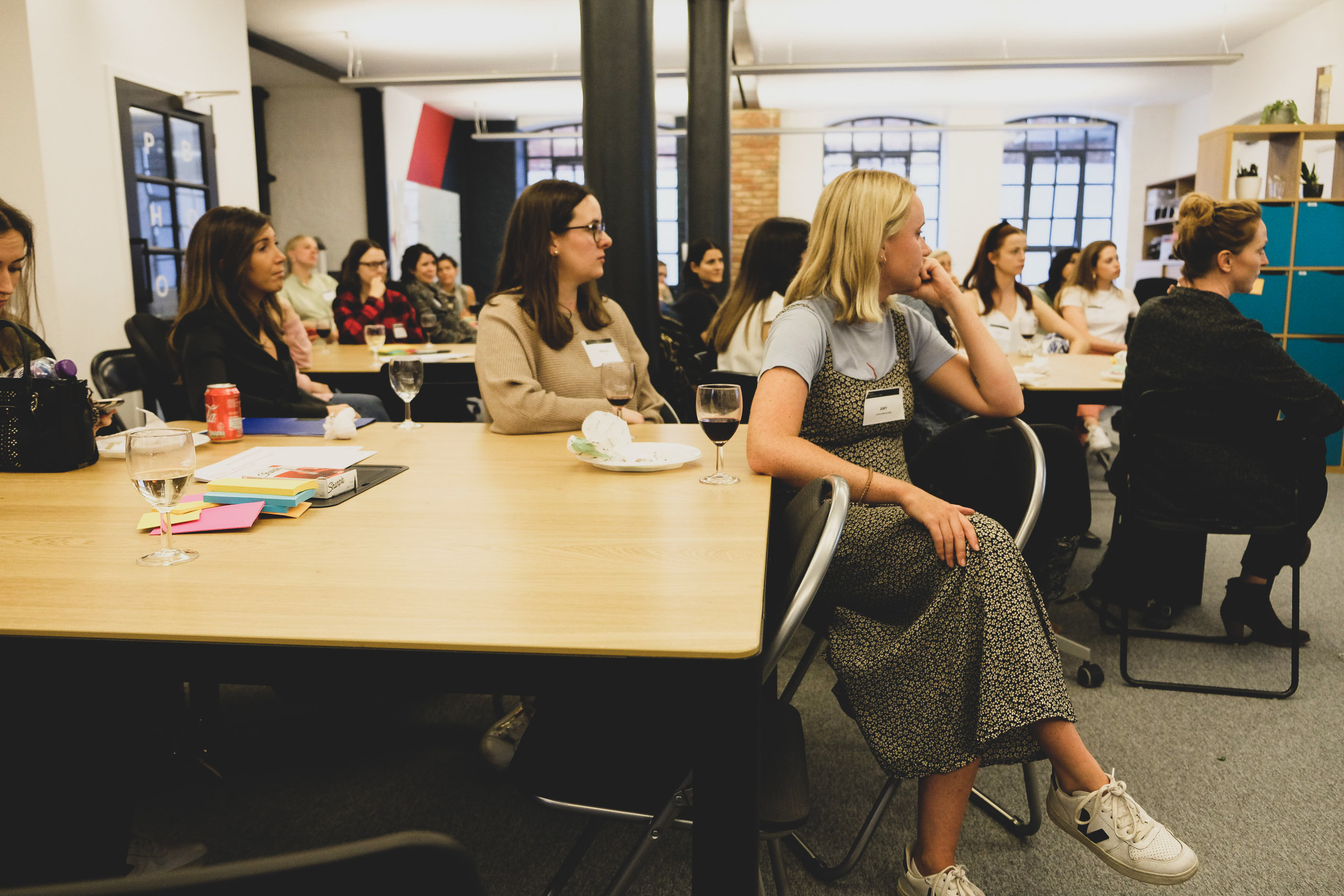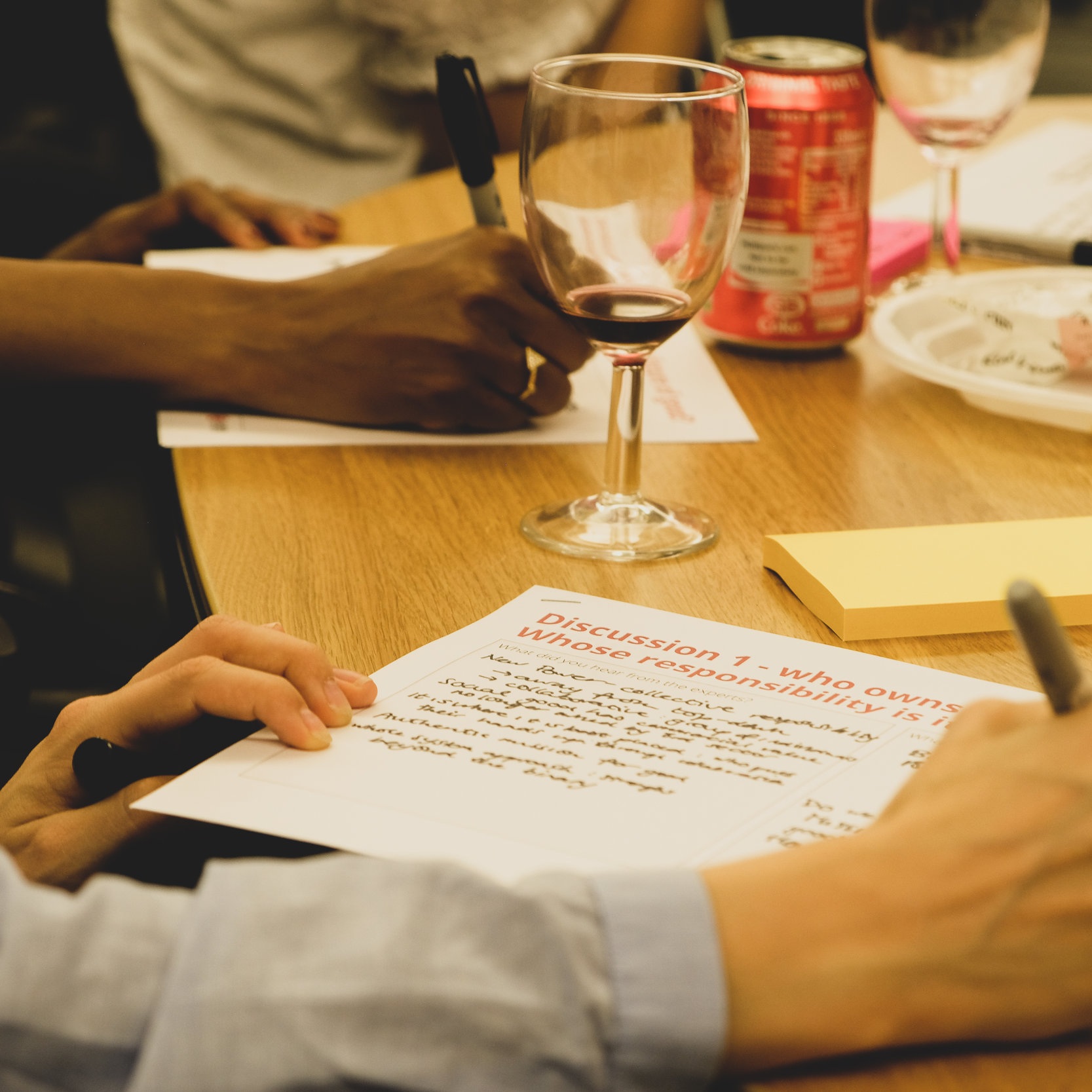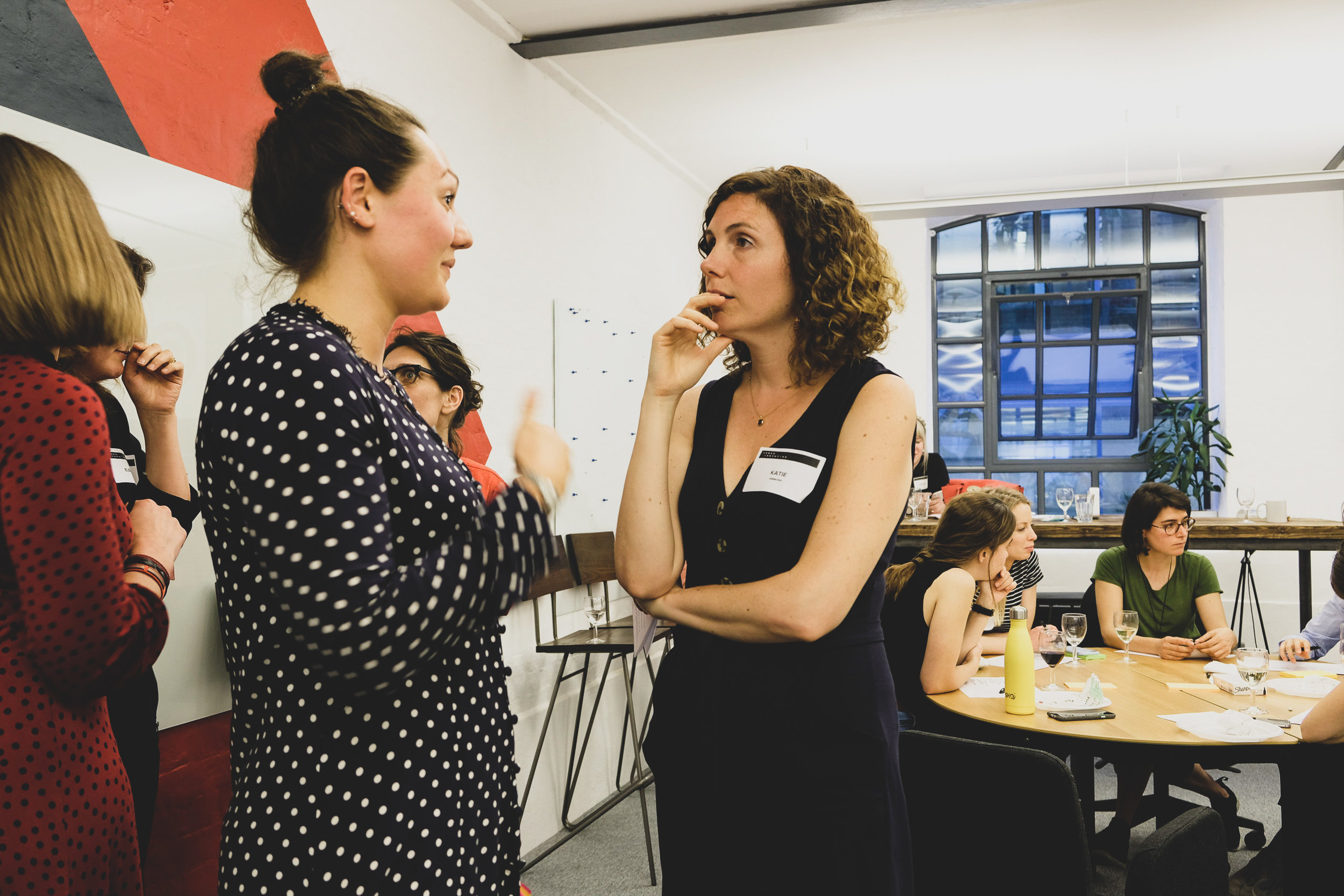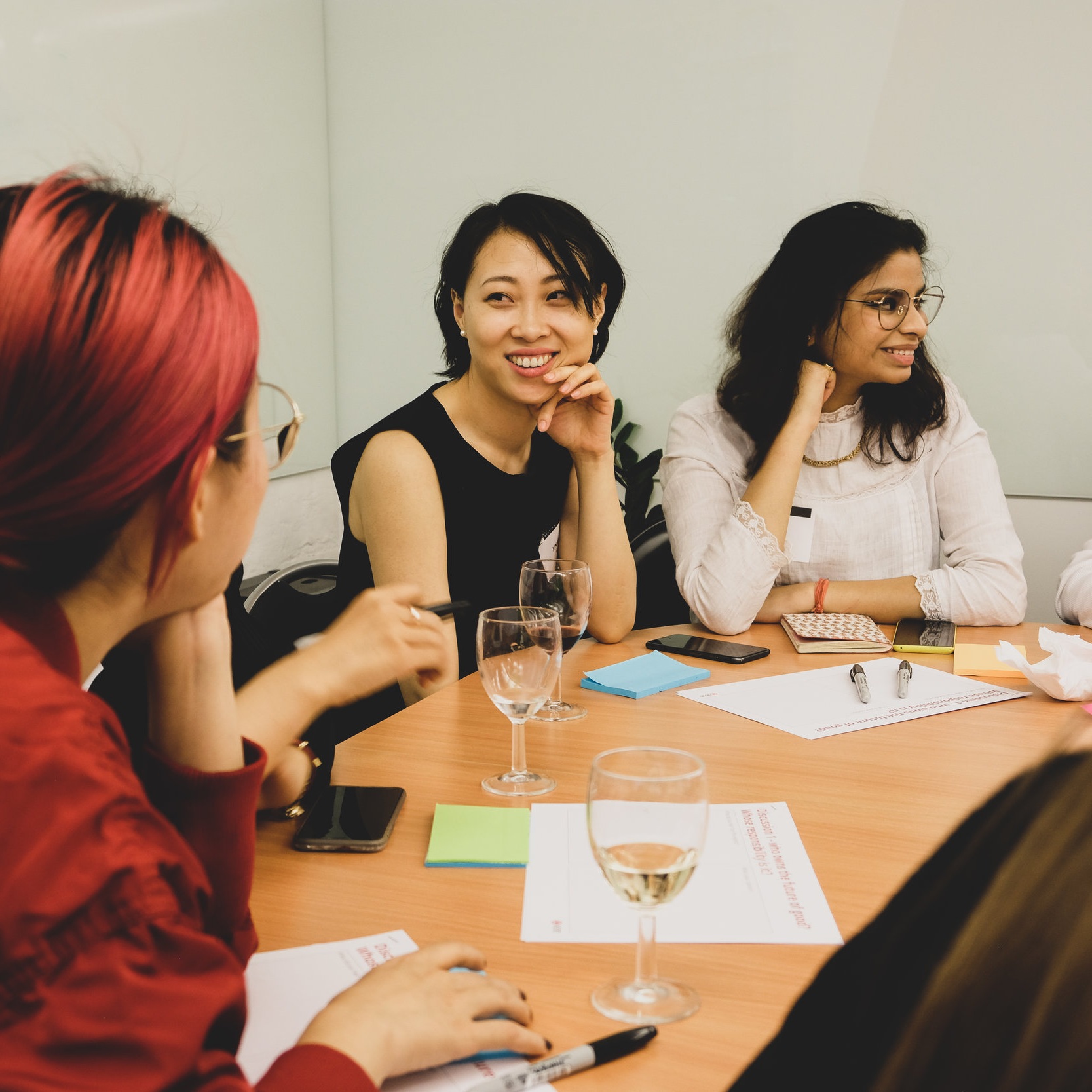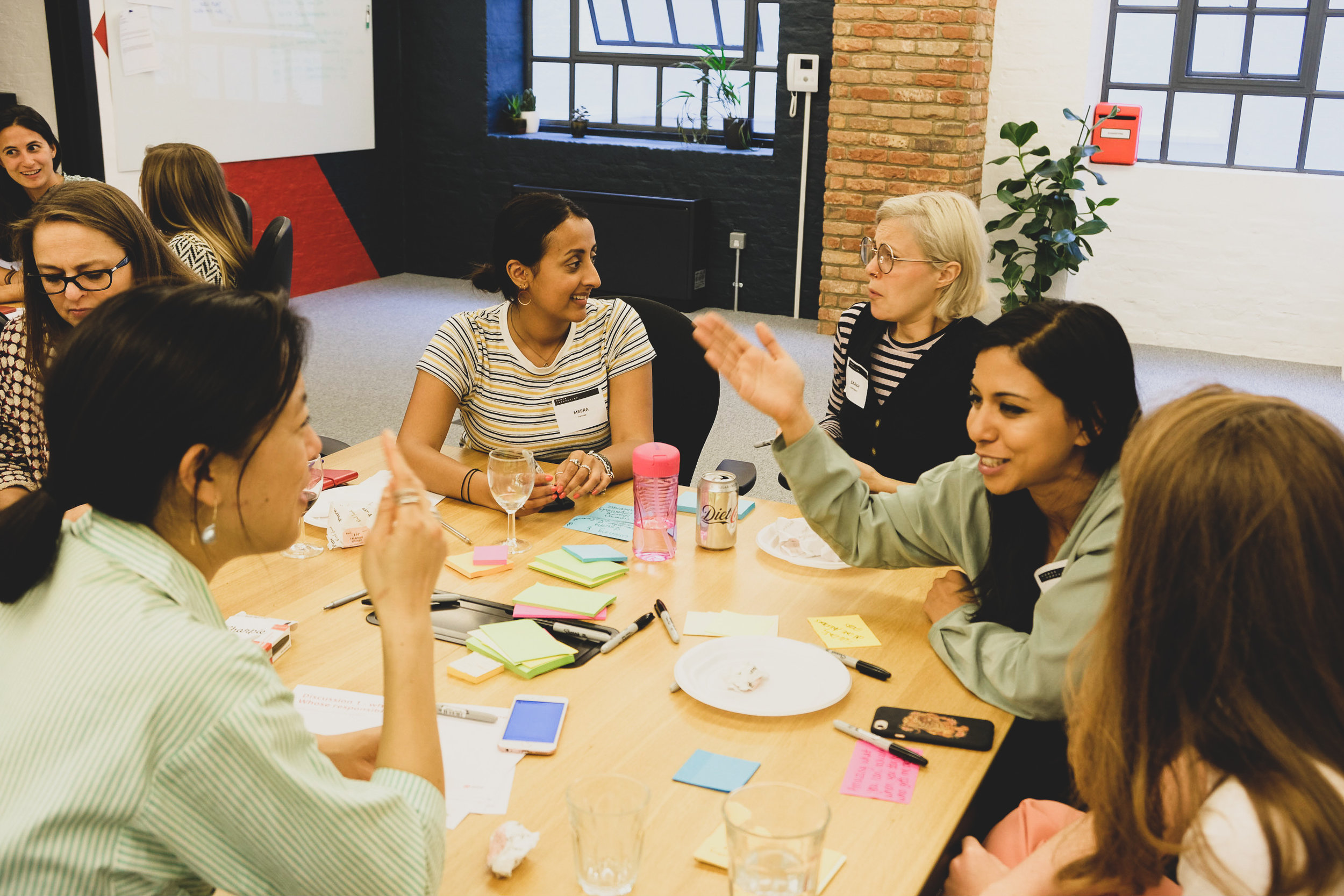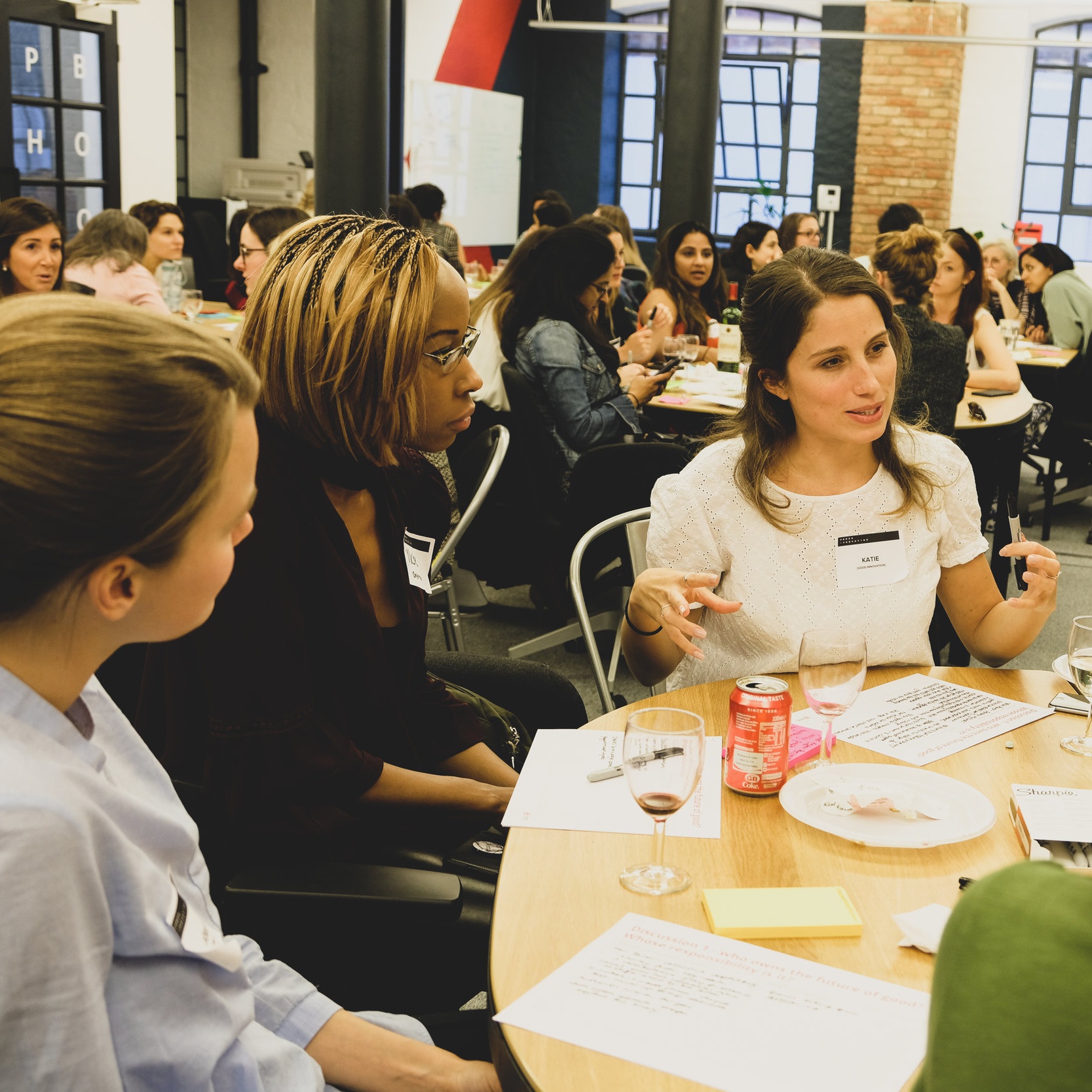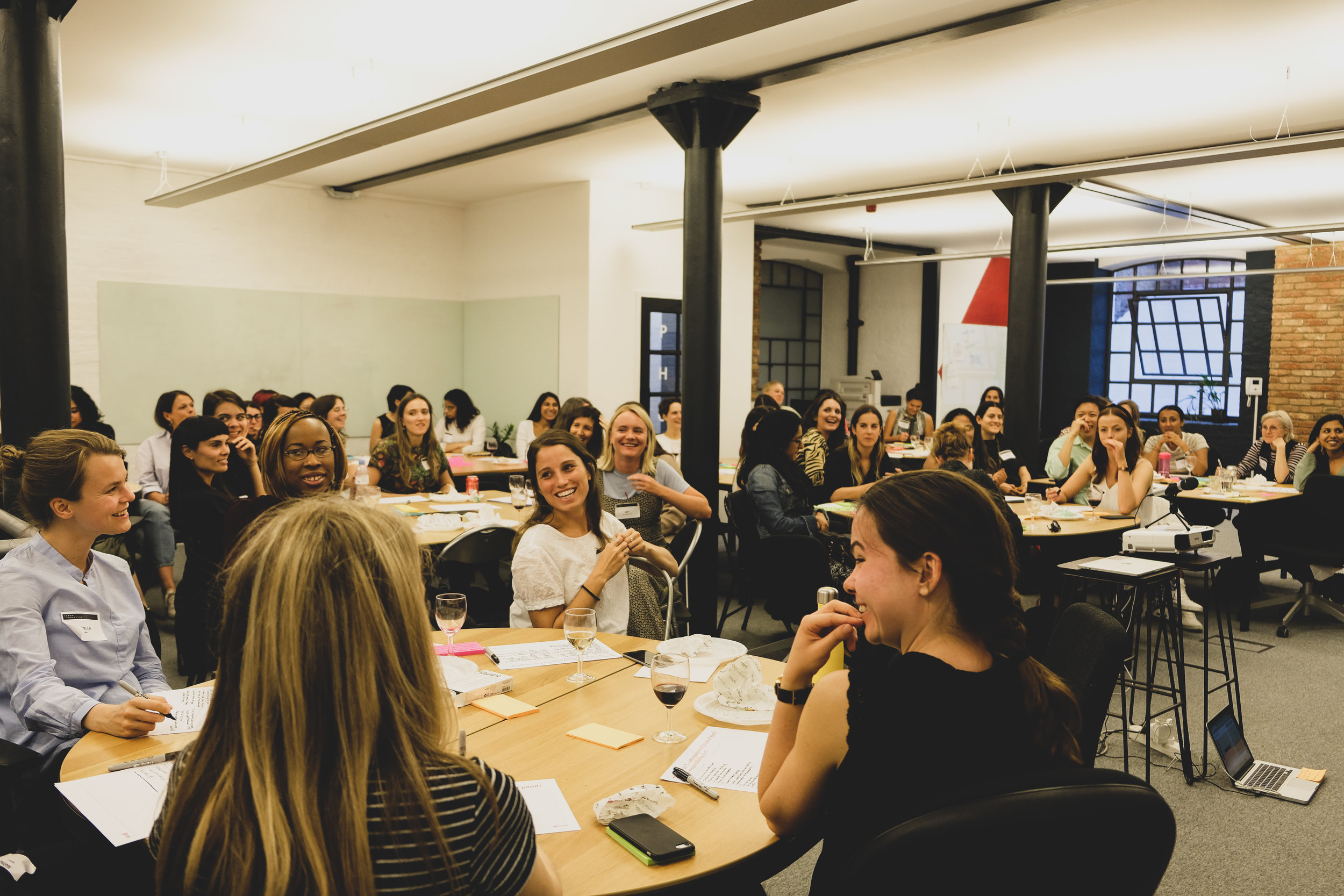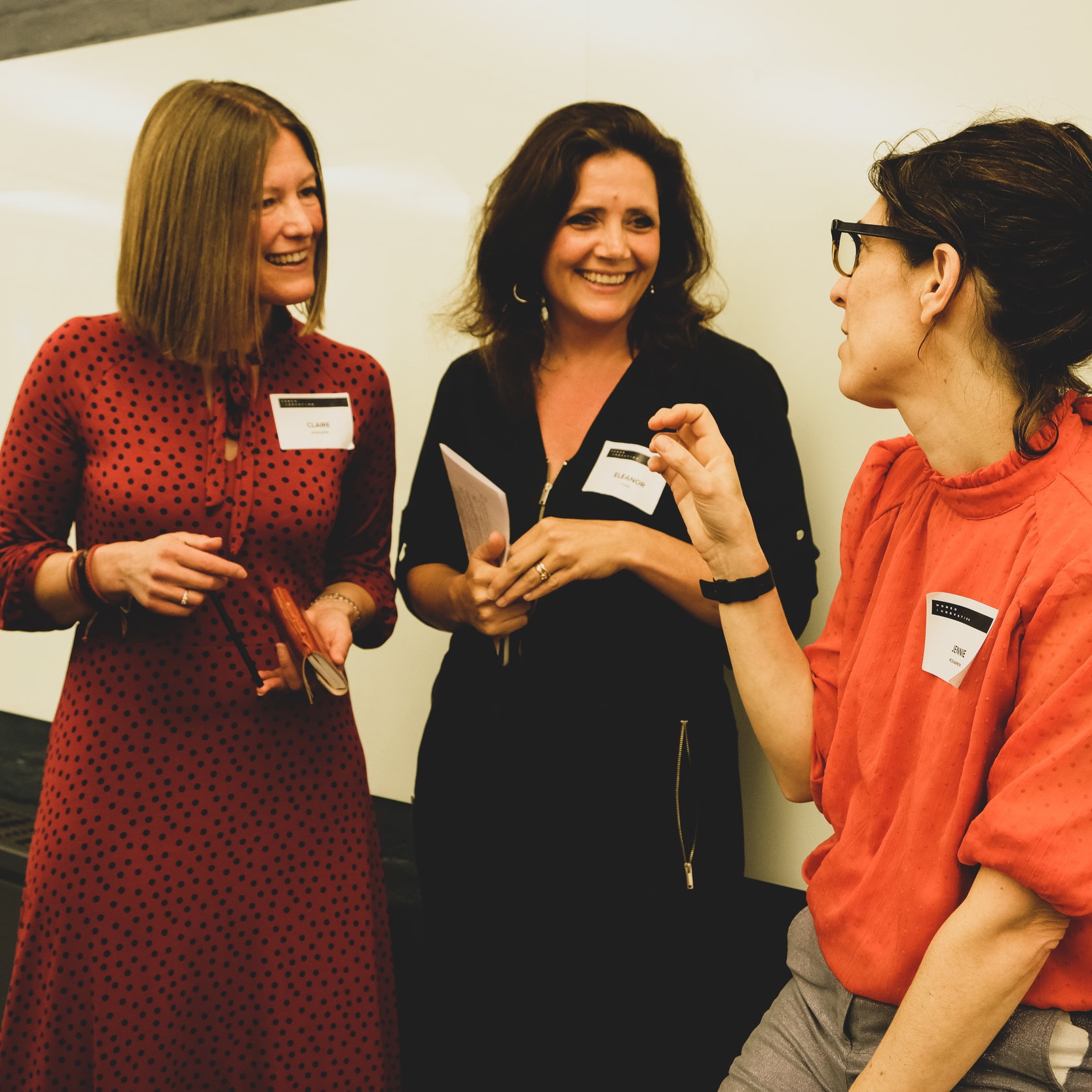Event Recap: WIN LDN x Good Innovation on Disruptive Collaboration and the Future of Good
Can innovation fix society? On June 20th, the WIN London community came together with Good Innovation and a panel of third sector experts to debate this key question - with a particular focus on the role that collaboration can play in changing the way we approach doing good. It was a dynamic and energising event where we saw many familiar faces but also had a number of new attendees who were drawn by WIN London’s first event focused on the third sector.
Hattie Camp, consultant at Good Innovation and a WIN ambassador, facilitated the discussion that was led by a series of key questions that were put to our third sector experts: Eleanor Ford, Partner at Good Innovation and Good Lab; Jennie McShannon, Organisational consultant at Tavistock Consulting; Claire Rowcliffe, Director of Fundraising at Royal British Legion, and Katie Simmons, Director of Fundraising and Strategy at the British Red Cross. Each expert shared their experiences in response to Hattie’s questions and then threw it to the audience to debate in their small groups, as guided by facilitators from Good Innovation and WIN.
As we debriefed on these conversations in the larger group discussion, a clear answer emerged - yes, innovation can fix society. But you need the efforts of many across teams, sectors and organisations, and a shared unifying vision that enables all those involved to stay on track and motivated to address the very real collaboration challenges that come with bringing so many different entities together. In a sense, collaboration itself is an additional entity in any cross-sector partnership - one that itself needs nurturing, the space to grow, and the time to let it fully come into its own.
This realisation deepened over the course of the evening through a series of discussion topics, each of which raised additional insights and questions to address. We’ve shared a quick breakdown of each below:
Discussion 1: Who owns the future of Good? Whose responsibility is it?
All of our panelists, and the larger group as a whole, agreed that all and none simultaneously own the future of good. Katie pointed out that overall, there is a larger shift in how we perceive charities, which have traditionally fallen under the purview of government. However, as part of a larger societal shift to more self-organising, community-based movements (and she gave a nod here to New Power by Jeremy Heimans and Henry Timms), this assumption is increasingly outdated and ownership has come increasingly from the people themselves, so to speak. As well, social purpose is increasingly able to deliver on mission and money which has opened up a whole new industry of social enterprises and corporations that are actively investing in delivering positive impact.
Building on this, Claire pointed out that the question is less about ownership - because ultimately, good has to be owned by a collective - and more about where Good is best placed - who has the desire and resources to execute and realise Good? In the process of determining this, coordination is ultimately the main issue. And to reinforce this, Eleanor gave some key advice: when trying to determine collaborative solutions for Good, we must remember that no one (or entity) is all good or all bad. We all have strengths and weaknesses and the biggest fallacy is if we try to create a solution where we are all in one tribe or one camp.
Our key takeaway: Embracing our differences and finding ways to work productively across these is the key, rather than focusing on ownership and pointing fingers at who is responsible for what.
Discussion 2: Share an example of where collaboration has worked/not worked when attempting to do good with purpose. What principles made it succeed or fail?
Eleanor shared the story of Good Lab, a collaborative effort founded by Good Innovation in 2016 that brought together 12 charities with the ambition of raising £250M in the next 10 years to solve some of the biggest issues within the third sector. Since then, it’s launched four impact ventures that all have social purpose at their core. One of the biggest lessons on the road to realising this ambitious vision is that ultimately, true success only can come if all involved are willing to adapt their own cultures and ways of working to buy into an entirely new model.
If Good Lab is the story of a “broker” organisation that recognised a need and created a coalition around it, the Red Cross’ VOICES Network is an adjacent example of how a traditional charity realised they needed to look beyond top down approaches to credibly support the millions of refugees that it serves every year. Katie shared the story of how VOICES was formed through the efforts of a dedicated group of staffers who realised that in order to effectively help their refugee beneficiaries, they had to turn the traditional charity model on its head and question. The Britist Red Cross questioned the assumption that they were the experts, and recognised that their own beneficiaries were experts by experience. Today, the VOICES network is a self-organised entity funded by the Red Cross that decides on its own priorities and programming and is driven by former refugees who uniquely know and understand the challenges from their own lived experiences. Beyond funding, the Red Cross plays a key role in enabling VOICES to achieve its mission by connecting them to the people who need it most.
Key takeaway: In order to successfully bring different groups and organisations together, you need to have facilitated empathy; enabling people to move beyond their differences to remain focused on the core purpose and harness each others unique skills.
Discussion 3: What are the right conditions for collaboration and how are they achieved when trying to do Good/work with purpose?
“When you choose, you lose.” To illustrate her point on what collaboration requires to truly thrive, Jennie told us the words of a former beneficiary who struggled with substance abuse. For this client, choosing to become sober would mean losing the certainty of their existing life - the certainty of a high, the certainty of the life they knew - for an uncertain future. An extreme but very relevant example: when choosing to change, you know what you’re giving up but not what you’re moving to - and the fear of the unknown is the reason why people resist and are uncomfortable with change, no matter the context. So in order to create the best conditions for collaboration, we must paint a picture of a vision that can inspire and create excitement so all can see more clearly what they could possibly gain and not assume that they will lose in the process.
Another common assumption for change work is that a burning platform helps to create the energy and momentum necessary to push people to change. However, Claire’s story from her experience on the board of her local domestic violence charity highlighted that certain burning platforms create the opposite effect when it comes to productive collaboration. When faced with the threat of funding withdrawal, a previously successful collective of partners fell apart. While they had found ways to collaborate when there was a clear shared funding source, when their individual funding was threatened they all retreated to focus on their own needs and interests, ending up with a result that was ultimately harmful to them all. The lesson learned is that you can’t do bold things with a fragile collaboration - and that ultimately, it all comes down to the initial foundations; how you set up your governance and ensure that you have productive and equal engagement across all related parties.
Our key takeaway: The right collaboration conditions require 1) a compelling shared vision where all are passionate about solving the problem, not just creating the solution 2) the right infrastructure that sets the partnership up for success and 3) a facilitator who can act as a translator and broker to keep all parties on the same page and on track.
Ultimately, while we had come together with a specific focus on how innovation can fix society, we left having learned key lessons that are applicable to any sector or any innovation challenge. More than anyone, we as Women in Innovation know the critical role that collaboration can play in driving how we innovate and disrupt - and are uniquely positioned to do so because of how we more naturally lead and engage. Big thanks to Good Innovation for an inspiring session for us all before we go on a summer break!
Good Innovation Ambassador: Hattie Camp
Panelists: Eleanor Ford, Jennie McShannon, Claire Rowcliffe, and Katie Simmons
Facilitators: Heather Ramsay, Katie Grierson, Nish Agarwal, Tara Protheroe, Maaria Tiensivu, Clara Maguire, Amy Christmas, Justine Lai
Operations: Amy Christmas
Photography: Sesh Vedachalam
Blogpost: Justine Lai and Hattie Camp
WIN: Women in Innovation Copyright (c) 2019 All rights reserved. This content may not be reproduced or repurposed without written permission from WIN: Women in Innovation (501(c)3). This blogpost is provided for your personal use only.



